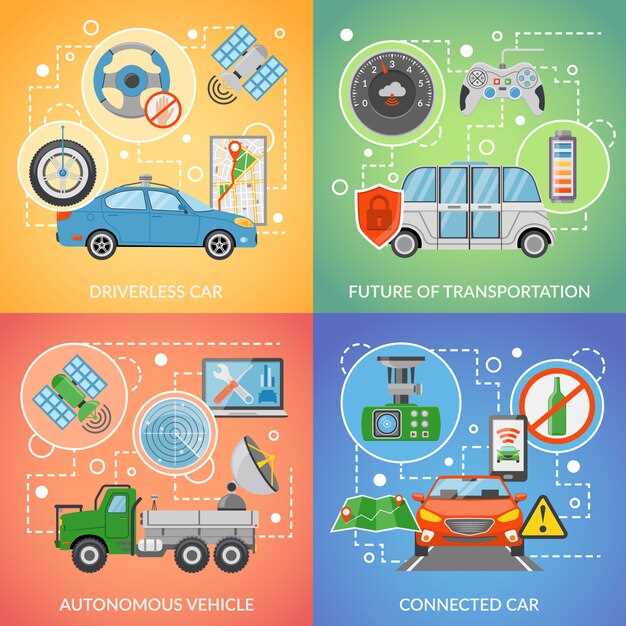
In recent years, the issue of vehicle emissions has gained significant attention worldwide. As governments strive to combat climate change and improve air quality, emissions regulations have become critical in shaping the automotive industry. Understanding these rules is essential for manufacturers, consumers, and policymakers alike, as they directly impact vehicle design, performance, and environmental sustainability.
Vehicle emissions regulations vary from country to country, reflecting local environmental priorities and technological capabilities. This complexity can often lead to confusion among stakeholders. By providing a clear framework and comprehensive guidelines, this article aims to bridge the gap in understanding the relevant emissions standards. We will explore the key aspects of these rules, including testing procedures, compliance requirements, and the role of emerging technologies in reducing harmful emissions.
Engaging with the details of these regulations not only supports compliance but also empowers consumers to make informed choices about the vehicles they drive. As the demand for cleaner transportation options increases, being knowledgeable about vehicle emissions regulations will play a vital role in fostering a sustainable future for mobility.
Key Steps for Achieving Compliance with Emission Standards

Achieving compliance with emission standards is essential for manufacturers and operators of vehicles. Following these key steps can facilitate adherence to regulations and ensure cleaner air quality.
1. Understand Local Regulations: Start by thoroughly researching the specific emission standards applicable to your region. Each area may have different requirements, so it’s crucial to stay informed about local, state, and federal regulations regarding vehicle emissions.
2. Conduct Emission Testing: Regular testing of your vehicle’s emissions is critical. Use certified laboratories to perform these tests, ensuring that you have accurate data on your vehicle’s performance and can identify areas requiring modification.
3. Implement Modifications: Based on testing results, make necessary adjustments to the vehicle’s engines and exhaust systems. Upgrading components, such as catalytic converters or fuel injectors, can significantly reduce emissions and enhance compliance.
4. Utilize Advanced Technologies: Investing in advanced technologies, such as hybrid or electric vehicles, can help exceed emission standards. Explore options that incorporate cleaner energy solutions, ensuring that your fleet is operating on the latest environmentally friendly technologies.
5. Maintain Regular Maintenance: Establish a routine maintenance schedule for all vehicles. Regular checks and timely repairs can prevent emissions control systems from failing and help maintain compliance over time.
6. Training and Awareness: Educate your employees about the importance of emissions compliance. Training programs can enhance awareness and promote best practices, ensuring that your team is equipped to maintain standards.
7. Documentation and Reporting: Keep meticulous records of emissions testing, maintenance activities, and compliance measures taken. Accurate documentation can be invaluable during inspections or audits, demonstrating your commitment to adhering to emission regulations.
By following these steps, vehicle manufacturers and operators can navigate the complexities of emission standards and contribute to environmental sustainability while fulfilling their legal obligations.
Understanding and Navigating Regional Emissions Rules
Regional emissions rules play a critical role in regulating vehicle emissions and ensuring environmental compliance. Different regions may implement varying standards, creating a complex landscape for manufacturers and consumers alike. Understanding these variations is essential for compliance with local regulations.
To navigate these rules effectively, it is vital to familiarize oneself with the specific emissions standards in place within a given region. Many areas adopt regulations based on federal guidelines, while others may introduce more stringent requirements. Staying informed about these rules can help vehicle owners and manufacturers avoid hefty fines and ensure lawful operation.
It is also important to understand the compliance mechanisms established by local authorities. These may include regular emissions testing, reporting requirements, and the issuance of permits for vehicles that meet or exceed set standards. Engaging with local environmental agencies can provide valuable insights into compliance procedures and potential incentives for adopting cleaner technologies.
Additionally, regional differences may arise in the definition of what constitutes a compliant vehicle. For example, certain regions may provide exemptions for electric or hybrid vehicles, whereas others may impose additional taxes on high-emission automobiles. Understanding these nuances can significantly affect vehicle purchasing decisions and ongoing operational costs.
Lastly, as regional rules continue to evolve in response to climate change and public health concerns, staying updated on proposed changes is crucial. Joining local automotive or environmental advocacy groups can offer resources and support in navigating the complex landscape of emissions regulations, ensuring compliance while promoting sustainability.
Common Challenges in Vehicle Emissions Testing and Solutions

Vehicle emissions testing is crucial for ensuring compliance with environmental regulations. However, several challenges can impede accurate testing and reliable results. Understanding these challenges and their potential solutions is vital for manufacturers and regulators alike.
-
Challenge 1: Variability in Testing Conditions
Different testing environments can lead to inconsistent emissions results. Temperature fluctuations, humidity levels, and even altitude can influence the performance of the vehicle during testing.
Solution: Standardize testing conditions by conducting tests in climate-controlled chambers. This can help minimize external factors affecting emissions and improve repeatability.
-
Challenge 2: Vehicle Variability
Diverse vehicle designs and technologies make it difficult to establish uniform emissions standards. Differences in engines, fuel types, and onboard systems can result in varying emissions profiles.
Solution: Implement a tiered testing approach that accommodates different vehicle categories and technologies. Customizing tests for specific vehicle types can enhance compliance accuracy.
-
Challenge 3: Incomplete Data Collection
Some testing protocols may not capture all necessary data points, resulting in gaps that can lead to incorrect emissions assessments.
Solution: Enhance data collection methods by incorporating advanced diagnostic tools and sensors. Leveraging on-board diagnostics (OBD) systems can provide deeper insights into vehicle emissions.
-
Challenge 4: Limited Understanding of Regulations
Manufacturers may struggle to keep up with ever-evolving emissions regulations, leading to non-compliance, fines, and reputational damage.
Solution: Regular training sessions and workshops on current emissions regulations will help manufacturers remain informed. Collaborating with regulatory bodies can also pave the way to better understanding compliance requirements.
-
Challenge 5: Costs of Testing Compliance
The financial burden associated with emissions testing can be significant, especially for small manufacturers. This might deter them from undertaking thorough testing processes.
Solution: Explore funding opportunities and partnerships with research institutions. Additionally, investing in shared testing facilities can reduce costs and improve collaboration across the industry.
By recognizing these challenges and implementing targeted solutions, stakeholders can enhance the accuracy of vehicle emissions testing, ensuring both compliance and environmental protection.






